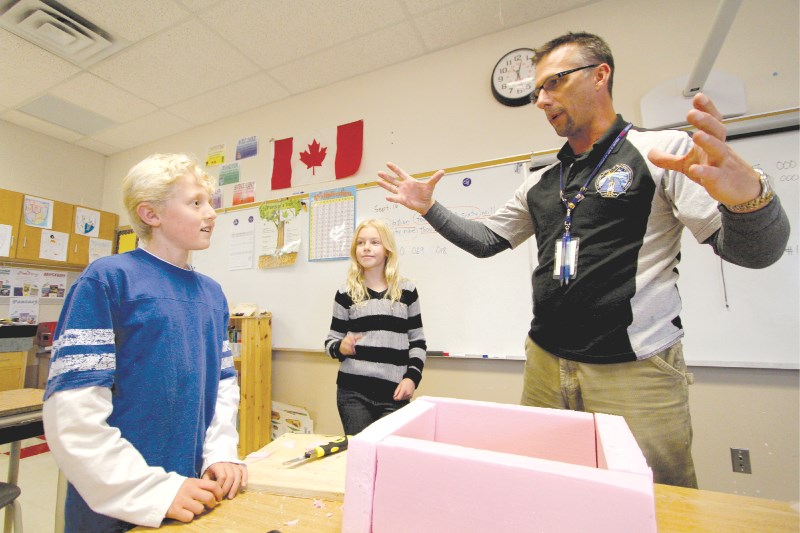Ralph McCall School Grade 6 teacher Brian Jackson and his Airdrie Space Science Club are on track to launch a weather balloon project Oct. 2 in Beiseker.
The Airdrie Space Science Club is made up of about 40 students and parents from both Airdrie and Calgary, spending one Saturday every month learning about space, but with a fun twist.
“We do space education, but it’s really mostly rockets,” said Jackson. “It’s the stuff that every kid wants to do, but don’t get the chance to try.”
The latest project, the Airdrie Balloon Experiment (ABE 1) which has been on the mind of Jackson for some time, is a weather balloon, fitted with a payload box containing artifacts from the group, a camera and a radio automatic position relay system (APRS) to recover the payload.
“It’s a balloon which is cabled to a parachute, which is attached to the payload box. When everything is done, it’s about $1,000,” said Jackson. “You kind of hope you don’t lose it.
Jackson says that the utility of the project goes past theory and into the practicality of the subjects involved.
“It’s science without doing science, it’s math without doing math, it’s construction stuff they would not do at home,” said Jackson. “They may not remember the math that I do on the board, but they will remember the math that went into this. As soon as it doesn’t look like science, kids were jumping into it.”
The balloon will be released in Beiseker for a flight that is expected to last about three hours. The balloon will climb to about 110,000 feet above the ground, or 34 kilometres into the sky. Due to the pressure changes at the different altitudes, the balloon is expected to burst when it reaches 37 feet in diameter at about the 34 kilometre mark. On the trip, the onboard camera will take a photo every minute, giving a view only a few people in this world will ever get to see.
Jackson has been in the process of setting up this project for more than a year, as sending a device like this through the sky requires a lot of paperwork and clearances from various levels of government.
“Our permission from Nav Canada says we have to fly west to east. We wanted to be able to walk out the back door here, but that will end up in Calgary flightspace,” said Jackson. “We are sharing the airspace with so many different things…you run the risk of interfering with a lot of things.”
While amateur weather balloons have been around for some time, Jackson emphasized that the project is experimental and that there is no guaranteed result. Jackson has been a part of a few launches before, one of which was never recovered. When all is said and done each member of the group will get a print of the best photo from the edge of space and their artifact that flew on the trip.




